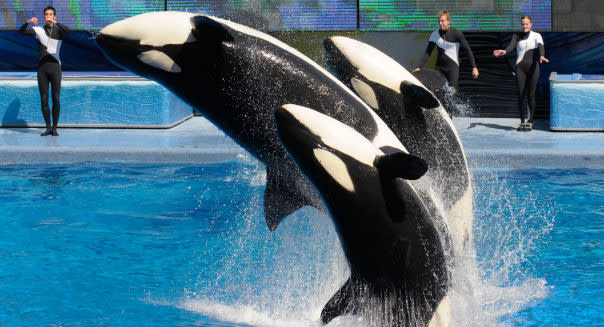4 Reasons Not to Hate SeaWorld Anymore

SeaWorld Entertainment (SEAS) hasn't been very popular since the "Blackfish" documentary stirred up the masses against the operator of marine-life theme parks two years ago. Attendance, revenue and profits have fallen sharply.
It wasn't a surprise to see SeaWorld make the Final Four in Consumerist's annual "Worst Company in America" award last year. It's not an easy company to vocally support, but you probably don't hate SeaWorld as much as you used to. Let's go over a few of the reasons the public may be warming up to SeaWorld these days.
1. It's battling 'Blackfish' with white fish. There are two sides to every story and that goes for documentaries that often cherry-pick what they present to back up their claim. There was always another side to "Blackfish," but it fell largely on deaf ears as incensed viewers assumed that the assertions were irrefutable.
%VIRTUAL-WSSCourseInline-1003%SeaWorld has tried to combat many of the claims raised in the 2013 documentary that it feels are dubious. The ads and even the #AskSeaWorld hashtag campaign have backfired, but the theme park operator continues to try to balance out the narrative. Last month it pointed to a peer-reviewed study published in the Journal of Mammalogy by the Oxford University Press, concluding that there is no material difference in life expectancy between killer whales born at SeaWorld and wild killer whales. "Blackfish" argued that whales in captivity lived much shorter lives.
2. The new CEO deserves a chance. SeaWorld hired an outsider to run the company in April. Joel Manby seems to be everything that critics argue SeaWorld is missing. He was CEO at the parent company of Dollywood and Silver Dollar City, two of the more popular family-run amusement parks in the country. He's on the record as being compassionate: He starred in an "Undercover Boss" episode, and he has even written a book -- "Love Works" -- on how treating employees with respect is the most effective way to manage.
Earlier this month he announced that he will detail his new vision for SeaWorld come November. It probably won't include releasing orcas into the wild, but anything that can soften the public's perception of SeaWorld can only help at this point.
3. Attendance is starting to move in the right direction. SeaWorld's latest quarter seemed to be a disaster on the surface. Revenue, attendance and earnings all went the wrong way. However, the stock still moved higher on the news. The market didn't misread the report. Sometimes you just have to dig beneath the headlines.
Yes, attendance did decline during the second quarter, off by 1.6 percent since the prior year's second quarter. However, that also included the Easter holiday shifting from April last year to March of this year, something that inflated the first quarter's turnstile clicks at the expense of the second. Add both quarters up and SeaWorld greeted 9.7 million guests at its parks through the first six months of 2015, 0.7 percent of last year. After two years of 4 percent declines in attendance, the crowds are starting to come back.
SeaWorld has had to discount admissions and folks aren't spending as much as they used to once inside the park, but attendance itself is trending higher in 2015 for the first time since the year before "Blackfish" came out.
4. There's more to SeaWorld than SeaWorld. SeaWorld runs the three namesake parks, but it's also the company behind the two Busch Gardens attractions and several water parks that have managed to hold up better in terms of attendance.
That helps, but it also helps that the three SeaWorld parks are actually evolving. SeaWorld is already in the process of expanding its killer whale habitat in San Diego, a $300 million project that will double the size of the tank and offer better viewing experiences that don't necessarily rely on a signature show.
SeaWorld is also adding more rides. It plans to open Mako at SeaWorld Orlando next year, a coaster that will be the tallest, longest and fastest ride in Orlando. Adding more thrill rides and family-friendly attractions will help it lean less on the marine life performances that are at the core of activist objections.
SeaWorld Entertainment won't change overnight, but it's taking steps to win back public perception as it repositions its offering as a theme park operator.
Motley Fool contributor Rick Munarriz owns shares of SeaWorld Entertainment. The Motley Fool has no position in any of the stocks mentioned. Try any of our Foolish newsletter services free for 30 days. Check out our free report on one great stock to buy for 2015 and beyond.

